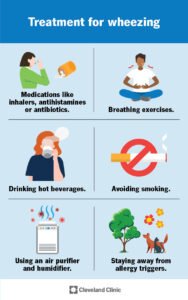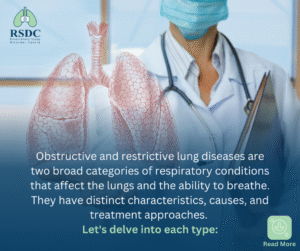Papilloma Skin Growths_ What to Know
Understanding Papilloma Skin Growths: A Comprehensive Guide
Papilloma growths are non-cancerous tumors that can develop in the body’s epithelial tissues, which are found in various areas like the skin, lips, hands, neck, armpits, and chest. While these growths may appear on the skin, they are often referred to as warts. In most cases, papillomas are harmless and require no treatment. However, if they grow inward or cause discomfort, they may need to be removed for both medical and cosmetic reasons.
Types and Locations of Papillomas
Papillomas can occur in several different forms and locations, depending on their type. Common types include:
-
Skin Papillomas: These occur on the outer layers of the body where epithelial tissue is present.
-
Intraductal Papillomas: These grow within a milk duct, commonly found in the breast.
-
Genital Papillomas: These develop in the genital area, such as the penis, vulva, urethra, vagina, cervix, and anus.
-
Respiratory Papillomas: These growths form in the voice box, vocal cords, or surrounding tissues.
-
Oral Papillomas: Found in the mouth, throat, or lips.
-
Sinus Papillomas: These develop in the nose or sinuses.
Differentiating Papillomas from Montgomery Tubercles
Montgomery tubercles are small oil glands on the areolas that can sometimes be confused with intraductal papillomas. While both can appear similar, Montgomery tubercles are not cancerous and are a normal part of the breast anatomy.
The Role of HPV in Papilloma Formation
Human papillomavirus (HPV) is the leading cause of papilloma growth. There are over 200 types of HPV, with some being high-risk and others low-risk. Most papillomas are linked to low-risk HPV strains. HPV is commonly transmitted through unprotected sexual contact, which is why papillomas are often associated with sexually transmitted infections (STIs). However, HPV can also be spread through non-sexual contact, such as:
-
Contaminated surfaces (fomites) like furniture, clothing, and utensils
-
Non-sexual skin contact
-
Sharing objects that carry the infection
Certain risk factors increase the likelihood of developing papillomas, including smoking and being born to a mother with an HPV infection.
HPV and Cancer Risk
While papillomas themselves are not cancerous, certain high-risk strains of HPV can lead to cancers, including:
-
Cervical cancer
-
Anal cancer
-
Oropharyngeal cancer
-
Penile cancer
-
Vaginal cancer
-
Vulvar cancer
The National Cancer Institute reports that HPV causes the majority of these cancers, with over 90% of anal cancers, 70% of throat cancers, and a significant proportion of other cancers linked to HPV infections.
Symptoms of Papillomas
The symptoms of papillomas vary depending on their type and location. Skin papillomas often cause minimal symptoms, mainly cosmetic issues that affect self-esteem. However, if they grow in sensitive areas such as near the eyes, they may cause discomfort. These growths typically appear:
-
Flat or raised
-
Cauliflower-like in texture
-
Long and thin (filiform)
-
Skin-colored, though they can also be yellow, red, or brown
Papillomas do not spread or grow uncontrollably like viral rashes, making it relatively easy to manage them. For accurate diagnosis and treatment, it’s important to consult a dermatologist.
Treatment and Removal of Papillomas
Most papillomas don’t require treatment, but some individuals opt to remove them for cosmetic reasons. Several methods can be used to remove papillomas, including:
-
Cautery: Burning off the tissue
-
Excision: Surgically cutting the papilloma out
-
Laser Surgery: Using a laser to destroy the growth
-
Cryotherapy: Freezing the growth with liquid nitrogen
In some cases, topical treatments may be used to eliminate the papilloma or stimulate the immune system to remove the tissue. These treatments fall into different categories:
-
Destructive: Chemicals like cantharidin or salicylic acid to destroy tissue
-
Virucidal: Agents like cidofovir or interferon-alpha that target the virus
-
Antimitotic: Drugs like bleomycin or podophyllotoxin that prevent cell growth
-
Immunotherapy: Treatments like candida antigen or imiquimod that enhance the immune response
Diagnosing Papillomas
To determine if a growth is a papilloma and ensure it’s not cancerous, a physical examination and biopsy are required. Skin scrapings may be taken for laboratory analysis to confirm the benign nature of the growth.
Long-Term Considerations and Prevention
While papillomas themselves are typically harmless, preventing HPV infections can reduce the risk of developing associated cancers. The Centers for Disease Control and Prevention (CDC) recommends HPV vaccination for individuals aged 11-12, though vaccination can be administered to those up to 26 years old. Vaccination after the age of 26 is generally not advised unless directed by a healthcare provider.
Conclusion
Papillomas are benign, wart-like growths caused by HPV infections. While they typically don’t pose a health risk, they can cause cosmetic concerns or discomfort, leading some individuals to seek removal. Vaccination against HPV can prevent most cases of papillomas and associated cancers, making it a key preventive measure.
FAQs on Papillomas
-
What should I do if I have a papilloma?
-
How can I prevent HPV infections?
Stay tuned for expert answers in our upcoming content updates!
Expert Tips for Managing Papillomas
-
Consider non-invasive treatment options like cryotherapy for minimal discomfort.
-
Stay up to date with HPV vaccinations to prevent future growths.
Key Takeaways
-
Papillomas are usually harmless but can be bothersome.
-
Early detection and removal can help prevent complications.
-
HPV vaccination is a powerful tool for prevention.
Join Our Community
For more health tips and skin care insights, subscribe to our newsletter and stay informed!






